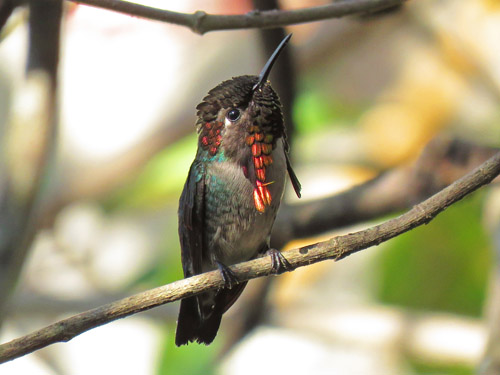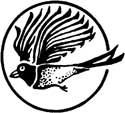To Monday, March 12, 2018
 Cuba: the very name evokes a certain mystique. To most Americans, who have been restricted from travel there for half a century, Cuba remains an enigma as big as the island itself. At 780 miles long, it is the largest island in the Caribbean Sea, and arguably the best preserved. While other Caribbean islands have been overtaken by resorts and the myriad accoutrements of tourism, much of the Cuban environment remains refreshingly intact. Over 20% of its landmass is officially protected. As a result, Cuba boasts the largest tracts of undisturbed rainforest, the largest unspoiled wetlands, and the largest and healthiest coral reefs in all of the Caribbean. However, hurdles remain to Americans wishing to experience the natural splendors here. We are pleased to offer a unique research opportunity in partnership with Cuban ornithologist Arturo Kirkconnell. This tour is officially licensed by the U.S. government to be conducted as a research trip. This program will facilitate interaction with local conservationists, study of Cuban culture, and – of course – appreciation of Cuba’s tremendous avian resources. We will gain experience with many of the 28 endemic species. The impossibly miniscule Bee Hummingbird – called “zunzún” by locals – is not only the smallest bird in the world, but also the smallest warm-blooded animal! With plumage perfectly matching the colors of the country’s flag, it’s hard to imagine a more suitable national bird than the Cuban Trogon. Some endemics, such as Cuban Nightjar, Bare-legged Owl, Gray-fronted Quail-Dove, Cuban Green Woodpecker, Cuban Tody, Cuban Martin, Cuban Gnatcatcher, Oriente Warbler, Yellow-headed Warbler and Cuban Blackbird, are thriving. Others, such as the stunning Blue-headed Quail-Dove, the elusive Gundlach’s Hawk, Cuban Palm Crow, Fernandina’s Flicker, Giant Kingbird, and Zapata Sparrow are endangered – some critically so. We will also learn about the role that conservation of the Cuban environment plays in the lives of birds we see in the United States. Many birds that we consider “ours” actually spend only a fraction of their lives in North America. Over 280 species that breed in North America utilize Cuban habitat to survive either their wintering or migration periods, aiding in their return to enrich our lives each spring and summer. Our program will not overlook the human aspect of this unique place. Cuban cuisine, art, and music reflect the island’s Spanish roots, but – nonetheless – is heavily influenced by African, indigenous, and other cultures. The Cuban people themselves are as warm and inviting as their tropical homeland. Join us as we explore “the real Cuba!”
Cuba: the very name evokes a certain mystique. To most Americans, who have been restricted from travel there for half a century, Cuba remains an enigma as big as the island itself. At 780 miles long, it is the largest island in the Caribbean Sea, and arguably the best preserved. While other Caribbean islands have been overtaken by resorts and the myriad accoutrements of tourism, much of the Cuban environment remains refreshingly intact. Over 20% of its landmass is officially protected. As a result, Cuba boasts the largest tracts of undisturbed rainforest, the largest unspoiled wetlands, and the largest and healthiest coral reefs in all of the Caribbean. However, hurdles remain to Americans wishing to experience the natural splendors here. We are pleased to offer a unique research opportunity in partnership with Cuban ornithologist Arturo Kirkconnell. This tour is officially licensed by the U.S. government to be conducted as a research trip. This program will facilitate interaction with local conservationists, study of Cuban culture, and – of course – appreciation of Cuba’s tremendous avian resources. We will gain experience with many of the 28 endemic species. The impossibly miniscule Bee Hummingbird – called “zunzún” by locals – is not only the smallest bird in the world, but also the smallest warm-blooded animal! With plumage perfectly matching the colors of the country’s flag, it’s hard to imagine a more suitable national bird than the Cuban Trogon. Some endemics, such as Cuban Nightjar, Bare-legged Owl, Gray-fronted Quail-Dove, Cuban Green Woodpecker, Cuban Tody, Cuban Martin, Cuban Gnatcatcher, Oriente Warbler, Yellow-headed Warbler and Cuban Blackbird, are thriving. Others, such as the stunning Blue-headed Quail-Dove, the elusive Gundlach’s Hawk, Cuban Palm Crow, Fernandina’s Flicker, Giant Kingbird, and Zapata Sparrow are endangered – some critically so. We will also learn about the role that conservation of the Cuban environment plays in the lives of birds we see in the United States. Many birds that we consider “ours” actually spend only a fraction of their lives in North America. Over 280 species that breed in North America utilize Cuban habitat to survive either their wintering or migration periods, aiding in their return to enrich our lives each spring and summer. Our program will not overlook the human aspect of this unique place. Cuban cuisine, art, and music reflect the island’s Spanish roots, but – nonetheless – is heavily influenced by African, indigenous, and other cultures. The Cuban people themselves are as warm and inviting as their tropical homeland. Join us as we explore “the real Cuba!”
Leaders: Cuban conservationist Arturo Kirkconnell & John Yerger
Cost of Cuba includes all accommodations, all meals, all transportation, and all entrance fees beginning and ending in Havana—$5795.
TO REGISTER: Print out a PDF Registration Form, call us at (520) 558-2351 or This email address is being protected from spambots. You need JavaScript enabled to view it..
Photo: Bee Hummingbird
Photo by: John Yerger







